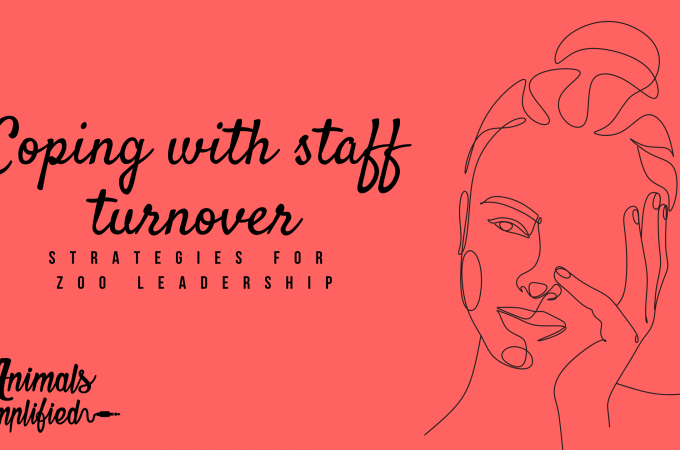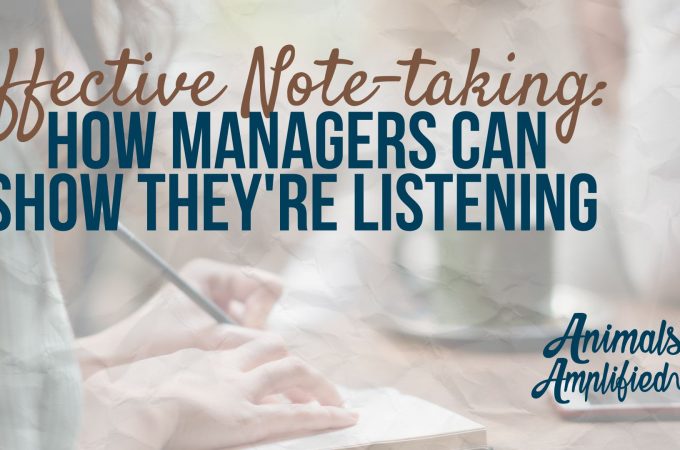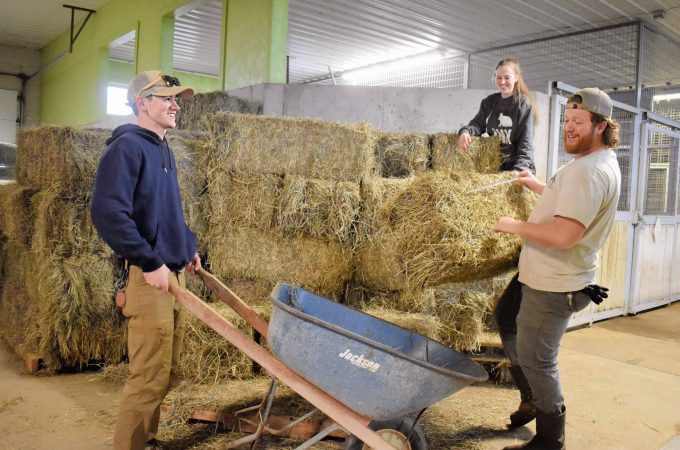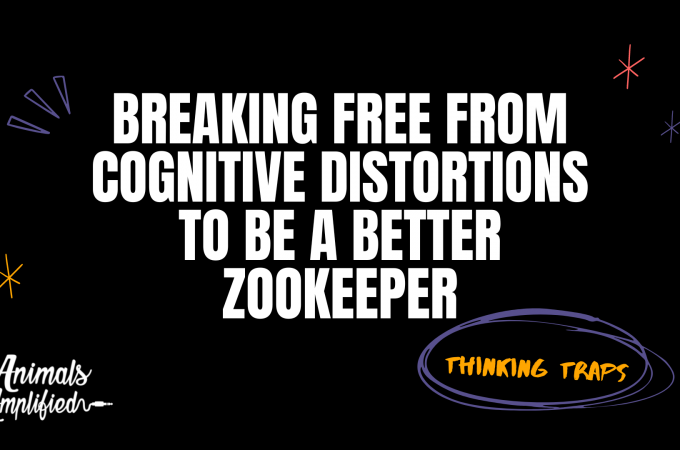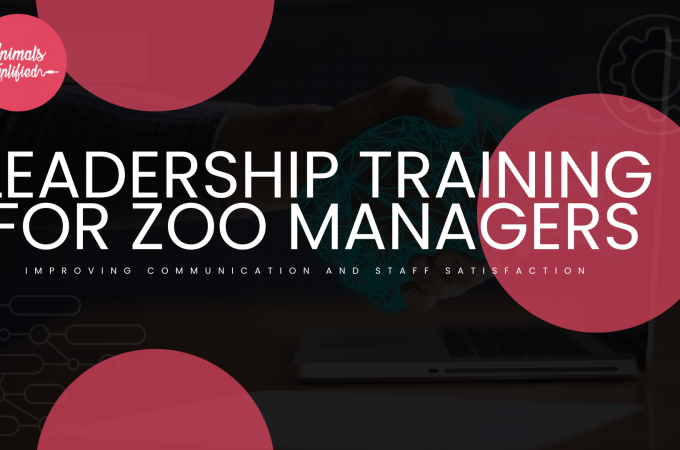
Assume best intent
I’ve launched a new course that is still in the Beta stage. That’s fancy online course lingo for the students who are going through it are encouraged to provide feedback so I can continue to improve the course. As I was working on the lesson about how to assume best intent I was LOVING the content so I decided to share it here with you! If you want the full course it’s easy peasy and FREE! Just head on over to our online learning platform and sign up to Be a Better Keeper.
In all the previous lessons we’ve talked about how to be respected and gain the trust of your leadership. We’ve also talked about how your behavior affects the animals. Now let’s talk about your coworkers, leaders, and other peers.
They’re going to disagree with you.
Sometimes, they’re going to make decisions you don’t agree with.
They’re going to make mistakes.
Sometimes it will feel like they don’t like you. Like they ignored you. You might feel like they think they’re smarter than you. It can make you feel small, unimportant, and not valued.
Stop.
It’s not about you.
I know it feels like it sometimes but the world is not out to get you.
The key to happy life is embracing this one value.
Assume best intent.
When your boss forgets to tell you about the last minute event. Instead of assuming they are incompetent or setting you up to fail or that you don’t matter enough to communicate with. Assume best intent. Maybe they simply forgot, maybe they have a lot on their plate.
When you bring a concern to your curator about an animal that looks sick and they don’t seem as concerned as you do. Instead of assuming that they don’t care about animal health, or that they don’t believe you know what you’re talking about. Assume best intent. Maybe they have experience that says it’s not an emergency or will resolve on their own. Could there be a more pressing emergency to deal with. What if they have information that helps them weigh the risks in a different way.
When your coworker snaps at you for not cleaning the way they want. Instead of assuming they are insensitive or that they don’t like you. Assume best intent. Maybe something is going on at home that’s affecting them. Maybe that particular task is something they feel strongly about. It’s possible some treated them unfairly in the past.
When you want to get furious, get curious. Seek to understand where others are coming from, apply perspective and give people the benefit of the doubt.
Here’s how you do it.
- Recognize. You feel yourself starting to get upset, emotional, frustrated, etc. by a situation.
- Stop. Breathe. Identify where in your body you feel the emotion. Identify what emotion it is.
- Acknowledge it, sometimes it can help to do this outloud, other times it’s appropriate to think through this in your mind.
- Get curious. Ask yourself questions. What is causing me to feel this way? What evidence do I have that whatever it is that is causing me to feel this way is true? Could there be any other explanation? Journaling can be helpful at this step or if you’re stuck asking a career coach or life coach can be helpful, “Can you help me understand why someone would do this?”
- Reframe. This is where you take the perspective you have gained from getting curious and remind yourself to assume best intent. You’ll describe at this point how while you felt emotional and upset the other person did not intentionally mean to make you upset and there is likely a perfectly understandable reason for their actions or words.
- Personal Accountability. In the final step you’ll recognize what you can control in the situation and work out how you will respond instead of react. Ask yourself “What” and “How” questions with the word “I” in them. “What can I do to improve this?” “How could I have better prepared for this?” “What do I need to do to move forward?”
- Action. Don’t sweep things under the rug and move on just because you’ve calmed yourself down. At this moment you’re deciding how you will apply your personal accountability to the situation.
Real life example
Let’s work through an example from above. There’s a young primate on your string with an injury that looks pretty terrible. The wound is open and bleeding and she’s not using her leg much. You notify your supervisor who comes down to take a look.
“Did you notice when this happened?”
“Yes, it was when I was shifting them on to exhibit the male blocked mom and baby in the shift door and a fight ensued. Lots of animals were in the fight and I wasn’t able to tell who actually got the baby, but she was fine on morning checks and then after the fight I noticed the blood.”
“Okay, give them lots of extra enrichment and food today and let me know what it looks like in the morning.”
WHOA! You were expecting to separate out mom and baby and pull the baby for a work up. There could be broken bones or damaged tendons. We’re going to wait and still! That’s absurd! That poor baby is in pain. We need to do something, she doesn’t even care, I can’t believe I work here! This is animal abuse!
Work the steps
- Recognize: I’m getting upset
- Stop: Take a deep breath and pay attention- I’m flush, my face is hot, my muscles are tense and I’m clenching my jaw. I’m angry.
- Acknowledge: You’re alone in holding right now, so tell the monkeys, “I feel angry right now!”
- Get Curious: What is making me feel this way? I feel angry because my supervisor doesn’t care about this injured animal and isn’t doing anything to help it! What evidence do I have that she doesn’t care and isn’t going to do anything? She came down here and looked at it and left. Could there be any other explanation for the way she responded? Maybe she’s seen something like this before. She has a lot of experience with this species, maybe she knows the animal is going to be okay. Maybe she saw something when she came down that made her less concerned than me.
- Reframe: I might have reacted without having all the information. She’s been doing this for almost 20 years. I bet she has some information or knowledge that I don’t have that is causing her to be less concerned about this situation.
- Personal Accountability: What can I do to gain that same knowledge? I could ask to talk to her later about it. How can I make sure she has all the information she needs to make decisions? I could get through a quick clean in holding and then go do a 30 minute observation to see if I observe nursing, eating, or any mobility. I need to know from her what things she and the vet are watching for incase of infection or further injury.
- Action: I’m going to clean, observe, and then head up to ask my questions.
You’re prepared
You can see how now you’re prepared to approach your supervisor in a calm way to ask questions. These questions won’t come across as accusatory or belittling because you are no longer angry, you’re ready to learn and grow.
Today’s tip – Assume best intent.
Want a worksheet you can use to work through these 7 steps anytime you’re facing a challenge? Head on over and enroll in the course!

